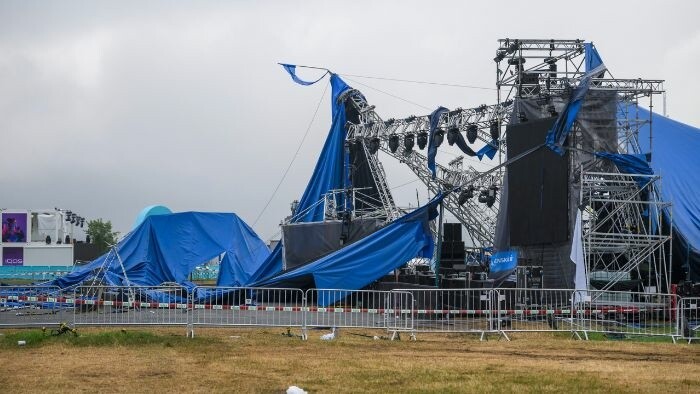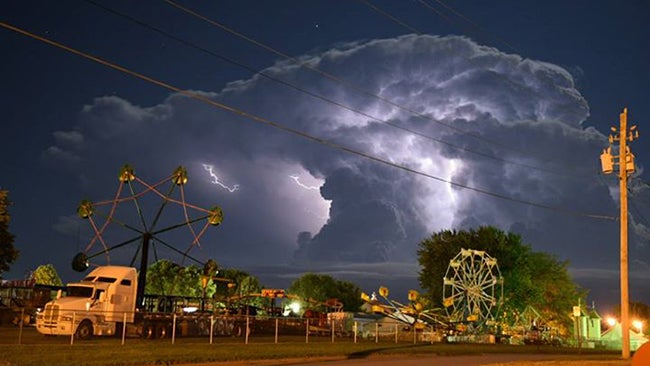🌨️💨⛈️🌫️
Weather is one of the most crucial factors that can significantly influence the course and success of any outdoor event, whether it’s a large music festival, a smaller open-air concert, or community activities in the fresh air. Open-air events are popular because they offer refreshing and emotionally intense experiences in nature under the open sky. However, their success is closely tied to the whims of the weather, which can be just as glorious as it is unpredictable.
In this blog, we’ll explore how various weather conditions impact outdoor events, from sunny days to adverse storms, and what organizers and participants can do to minimize the risk of unpleasant surprises.
1. Sunny and Warm Weather: The Ideal Scenario?
For most open-air festivals and concerts, organizers rely on favorable weather, where the sun takes center stage. Sunshine brings people good spirits, creates a pleasant atmosphere, and provides organizers with ideal conditions for smooth event execution. However, extreme heat can pose its own challenges.
- Advantages:
- Sunny weather means no worries about rain, mud, and soaked surfaces.
- Attendees tend to stay longer and enjoy the performances more.
- Photographing and filming under natural sunlight provides beautiful and vibrant visuals.
- Disadvantages:
- Extremely high temperatures can cause dehydration, heatstroke, or fatigue, leading to health issues.
- Ensuring enough shade and the availability of drinking water becomes a key logistical factor.
- Many attendees may seek shelter from the sun instead of fully engaging with the program.
For organizers, it is essential to consider visitor protection. For instance, providing water stations, setting up tents or awnings, and informing attendees about the importance of hydration can significantly contribute to comfort and safety.
2. Rainy Weather: The Nightmare for Organizers?
If the sun is the friend of outdoor events, rain can be their worst enemy. While light rain may not necessarily spell disaster, heavy storms, sudden downpours, or prolonged rainfall can quite literally wash the entire event away.
- Challenges of Rain:
- Mud and waterlogged surfaces: For attendees, it can be uncomfortable to move around on water-soaked lawns or muddy grounds. Many festival-goers are familiar with the feeling of getting their feet stuck in the mud.
- Equipment and safety: Rainy conditions can seriously affect technical equipment—ranging from lighting and sound systems to the stage itself—leading to unsafe situations or equipment failures.
- Reduced attendance: Many people may choose to stay home or leave early if the weather worsens significantly.
However, some festivals become known for the “rainy festival experience” due to proper preparation. The key is to provide essential measures—well-drained areas, waterproof equipment, ample covered spaces, and regular monitoring of weather forecasts.
3. Wind and Storms: A Real Threat
Strong winds and storms are among the biggest risks that open-air events face. Wind can damage structures, destroy stages, disrupt audiovisual equipment, and even pose safety risks for attendees.
- Strong Wind:
- Can destabilize tents, banners, stages, and other structures.
- Blows dust, leaves, or other debris, which can affect comfort and safety for the crowd.
- Storms:
- Storms can arrive quickly and have disastrous consequences if events are not prepared for them.
- Heavy storms often come with lightning, which is a major safety concern for large gatherings in open spaces.
Organizers must rely on professional meteorological forecasts and have evacuation plans ready. Festivals should be prepared to act swiftly, ensuring the safety of attendees by halting performances, shutting down equipment, or even evacuating the area if necessary.
4. Cold Weather: The Chilly Reality of Autumn Events
Sometimes, outdoor events are not only held during the warm summer months but also in the fall or early winter when temperatures can drop significantly. While this might mean fewer sunburns, it presents new challenges.
- Low Temperatures: Participants may be less inclined to stay outside for extended periods, which can dampen the overall atmosphere of the event.
- Layered Clothing: Organizers must inform attendees about the need for warm clothing and provide heated spaces or fire pits where people can warm up.
Taking appropriate measures to counter cold weather can include offering warm drinks, creating cozy rest areas, and adding comforts that will encourage people to stay engaged despite the chill.
5. Weather Uncertainty: How to Prepare for Everything
Unpredictable weather is a challenge that all outdoor event organizers must account for. While forecasts might suggest certain conditions, reality can be entirely different. Therefore, it is important to consider:
- Flexibility: Have backup plans ready, such as the ability to quickly alter schedules, move the event indoors, or shorten the program.
- Keeping Participants Informed: Timely communication is key. Modern technology, such as mobile apps or social media, allows organizers to quickly inform people of any changes or safety measures.
- Event Insurance: The risk of bad weather can be partially mitigated with insurance, which can help organizers minimize financial losses.
Conclusion
Weather is a powerful force that can transform any open-air event into an unforgettable experience, whether for better or worse. The key to success lies in foresight, flexibility, and thorough preparation. Organizers should take all scenarios into account and implement measures to minimize the adverse effects of weather, ensuring a safe and enjoyable event for everyone involved.
By anticipating potential weather challenges and communicating with attendees, open-air festivals, concerts, and events can thrive, even when nature decides to test their limits.



